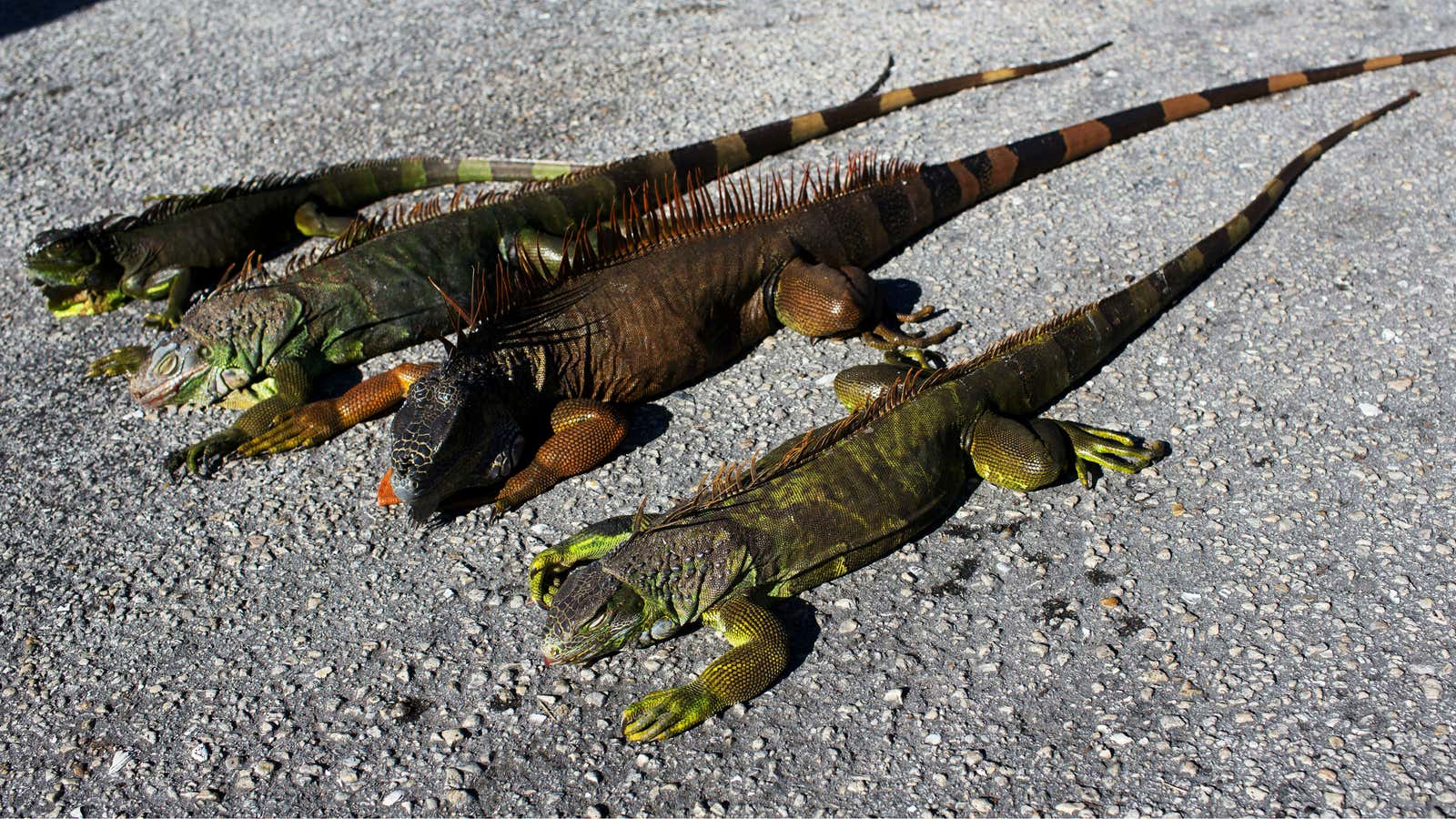Researchers in Florida are experimenting with a crude and gruesome tactic to reduce the state’s expanding iguana population: bashing in their skulls by hurling them against the side of a wall.
The mass lizard extermination is actually part of a concerted effort by researchers from the University of Florida to find the most humane methods of reducing the growing population of invasive iguana species. The three-month research project is funded by a grant from the Florida Fish and Wildlife Conservation Commission (FWC).
The researchers use a tool called a captive bolt gun, similar to what’s used in the livestock industry, to stun the reptiles with a shock to the brain. They then decapitate the iguanas by smashing their heads against brick walls, trucks, and boats. It seems brutal, but the technique doesn’t violate Floria’s anti-cruelty statutes.
“Most of what we’re doing is blunt-force trauma,” said UF Jenny Ketterlin biologist told the South Florida Sun Sentinel. “Hitting their head very hard against a solid object.”
Shocking iguanas and smashing their skulls may sound cruel and unusual, yet quickly destroying their brains is actually the most humane way to kill them, Ketterlin said. The electric shock is designed to act as an anesthetic, so the iguanas don’t feel any pain.
Florida’s growing iguana problem
According to the FWC, the green iguana and black spiny-tailed populations are a growing problem in Florida, particularly in Miami-Dade and Broward Counties. Iguanas aren’t native to the state, though have been found there since the 1960s.
When the lizards first started appearing in the 1960s and ’70s, residents thought they were novel and exotic. “If we caught a three- to five-foot iguana, it was like catching a dinosaur,” one local told the Miami Herald.
Today, iguanas are a common nuisance—they eat garden plants and leave droppings in yards and pools, which spreads salmonella. They damage roads and cause erosion by digging burrows. They show up in shopping malls and collect on golf courses. In the Keys, iguanas eat the plants the dwindling butterfly population relies on for food. They’re also a threat to the Keys’ new billion-dollar sewage line.
Iguanas have become such major pests that the FWC recently hired a full-time trapper to keep them off of public land. The Sun Sentinel offers a handy Q&A on how to legally kill an iguana (freezing and poisoning are forbidden). And they’re more than a small pest: Iguanas in Florida can grow to over five feet in length and weigh up to 17 pounds.
The toll so far, in lizards
The researchers have captured and killed 249 iguanas to date. According to Ketterlin, they sneak up on the lizards in the middle of the night to catch them by surprise, and kill them on the spot. Then, the reptiles are placed in bags and taken back to the lab where they are examined and taken to a local landfill that accepts animal carcasses.
The team has also experimented with setting traps in county parks using cherry tomatoes and watermelon as bait. So far the traps have only managed to snare raccoons.
